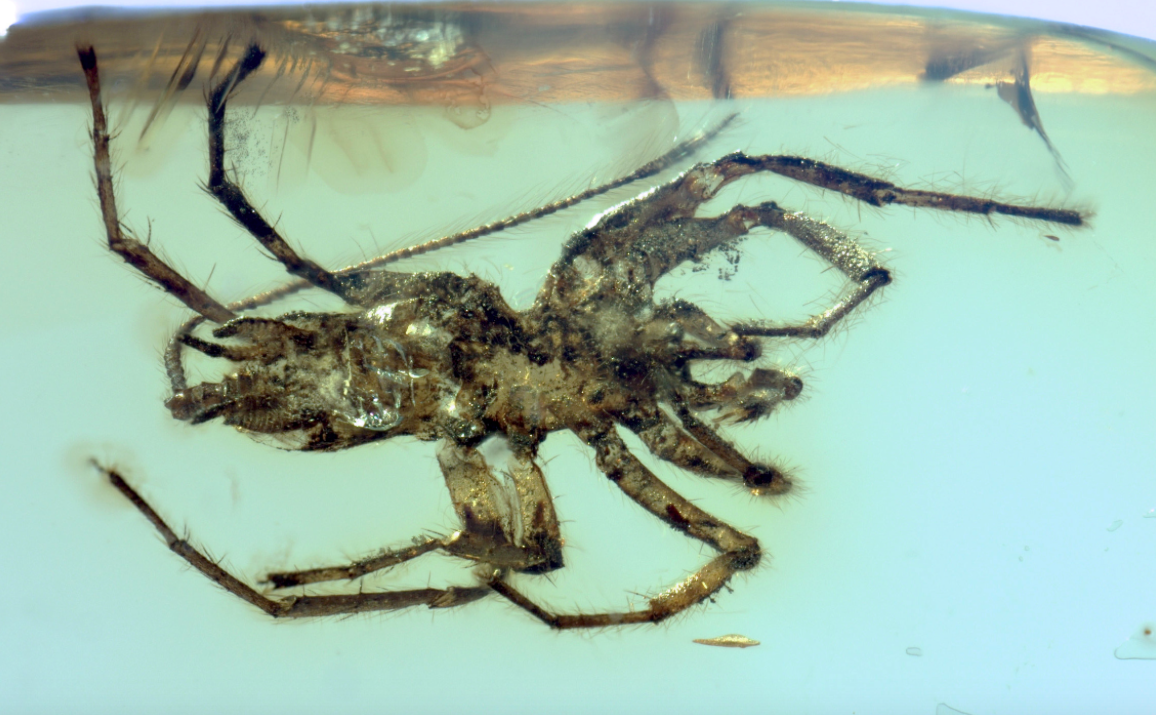Be grateful it's extinct! 100-million-year-old spider discovered with a tail like a SCORPION

This spine-tingling spider has been found in amber dating back 100 million years – and it features a SCORPION-like tail.
The primitive creepy crawly is so scary it has been named after a monster from Greek mythology that was made of the parts of more than one creature.
The Chimerarachne – that takes its name from the Chimera – scurried around the undergrowth of the rainforests of Burma during the age of the dinosaurs.
Its tail was longer that its body and was used as a sensory device to seek out prey or escape predators.
The telson is something we see it today in scorpions – but it has never been known before in a spider.
Just for good measure, the newly-discovered species also had fangs – just like today’s arachnids – through which it would inject venom into insects it trapped in pincer like claws.
While creeping through the dinosaur-era forest, four spiders became enveloped in a pool of tree resin oozing from conifer trees.

The foursome were entombed in stunning detail – the head, fangs, male pedipalps, four walking legs and silk-producing spinnerets at the rear could all be observed.
Had there been any humans alive during the dinosaur age, they may not have been too scared of the spiders as they were all just 2.5 millimetres long – excluding the nearly 3 millimetre-long tail.
Palaeontologist Professor Paul Selden, of Kansas University, said: “Any sort of flagelliform appendage tends to be like an antenna.
“It’s for sensing the environment. Animals that have a long whippy tail tend to have it for sensory purposes.”
MOST POPULAR TODAY ON YAHOO UK
Wrap up warm! Snow to hit almost EVERY part of UK during ‘coldest winter week’
Police chief makes u-turn on on pledge to punish every driver who goes 1mph over speed limit
Aldi recalls 38,000 bags of frozen veg after customer finds half a RAT inside one
Man stabbed on Oxford Street after ‘fighting back against moped muggers who stole his phone’
Billie Piper says she was ‘over-sexualised’ during early part of her career
The spider lived on the islands of Myanmar – formerly Burma – during the mid-Cretaceous when Tyrannosaurus Rex ruled the planet.
The extraordinary finding is described in Nature Ecology & Evolution by an international team which included earth scientist Dr Russell Garwood of Manchester University.
It’s the latest in a series of Cretaceous-period fossils from the amber deposits in northern Myanmar’s Hukawng Valley.
Prof Selden said the spider’s remote habitat made it possible that tailed descendants may still be alive in Myanmar’s back country to this day.
He added: “We haven’t found them, but some of these forests aren’t that well-studied, and it’s only a tiny creature.”

 Yahoo News
Yahoo News 

